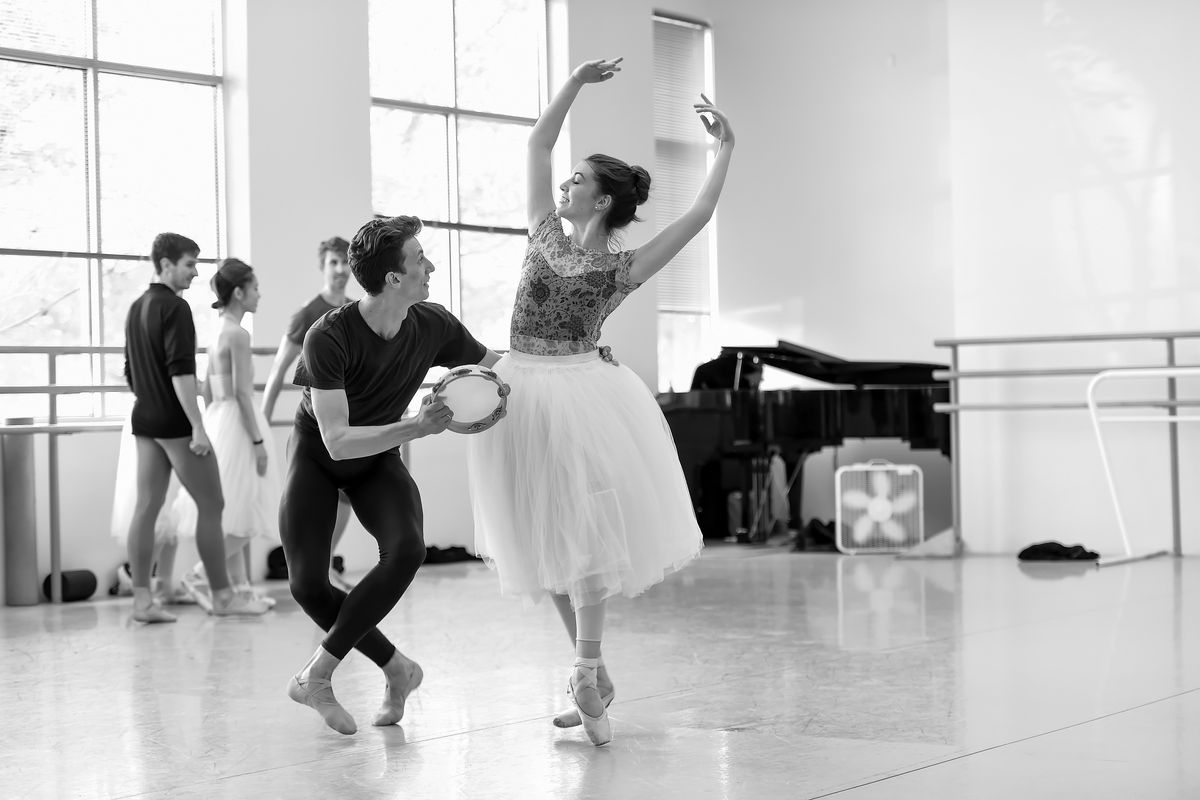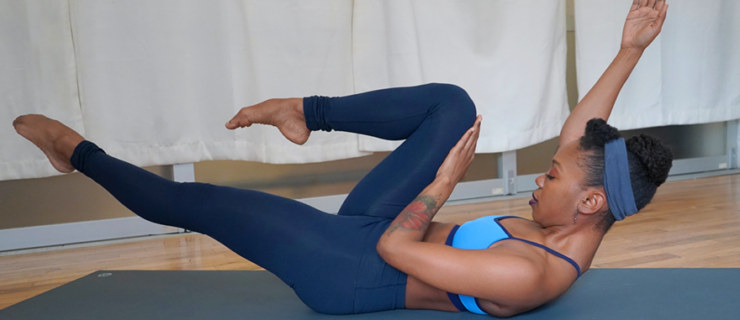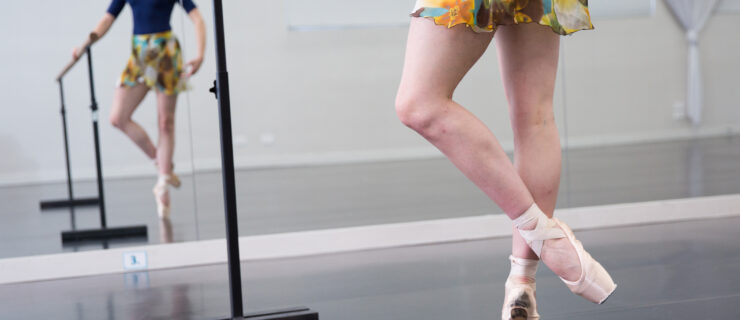Pushed to the Limit: How Cardio Training and Healthy Eating Can Help Dancers Improve Their Stamina
Kelsie Nobriga’s first run-through of Nacho Duato’s Rassemblement was a wake-up call. Until then, the Oregon Ballet Theatre soloist had only rehearsed individual sections of the ballet, unaware that she’d have little time to recover in between each one. Discovering just how tiring the 27-minute ballet would be was terrifying. “The first time we ran it I felt like I was going to pass out or throw up,” she recalls. “My quads would just give out. I was really nervous about how I was going to perform it onstage.”
When you’re gasping for breath, not only do the simplest steps feel impossible, but your risk of injury also increases. Stamina is a crucial part of a dancer’s performance tool kit, though typical ballet classes don’t do much to develop it. With some advance planning outside the studio, you can build up your cardiovascular and muscular endurance to make a marathon ballet less daunting.
Why Stamina Is Important
 Getty Images
Getty Images
Poor stamina leads to fatigue, the top cause of injury in professional dancers, says physical therapist Kester Cotton, dance program coordinator at Spaulding Rehabilitation Network in Boston. “Ballet dancers in particular are shown to have lower levels of cardiorespiratory fitness than other athletes or types of dancers,” he says. That’s because the stop/start pace of ballet class does little to replicate choreography’s cardiovascular demands. “If dancers aren’t in good cardio shape when they begin a tough rehearsal period, they’ll fatigue faster and their tendons and joints are more likely to experience load and damage.”
But cardiovascular and muscular endurance go hand in hand: Pushing through repeated relevés or jumps when you’re tired invites a sprained ankle (or worse). Good calf strength (a basic measure of local muscular endurance) should be a priority along with aerobic capacity, Cotton says. “If you can consistently do 25 slow, controlled calf raises—straight-legged, no plié—even when fatigued, the incidence of ankle injury is much, much lower.”
Plan Ahead—Way Ahead
 American Ballet Theatre’s Stephanie Williams and Blaine Hoven in Swan Lake. Gene Schiavone, Courtesy ABT
American Ballet Theatre’s Stephanie Williams and Blaine Hoven in Swan Lake. Gene Schiavone, Courtesy ABT
Supplementing ballet class with cardio training can help improve stamina. “I run three to four miles a day,” says American Ballet Theatre corps member Stephanie Williams. “For me, that’s a baseline where I know I’m in good shape. If I can do that, I feel confident I can push my body onstage.”
While running may not be for everyone, a solid base of cardio fitness should be. Boyd Bender, director of physical therapy services at Pacific Northwest Ballet, says dancers should be able to sustain a moderate pace on a stationary bike or elliptical machine for 30 to 45 minutes, three to four times a week. “But that’s just the first part,” he explains. “From there, they can start pushing harder to replicate what they’ll need onstage.”
Cotton emphasizes that it’s critical to improve your cardiovascular capacity for a demanding ballet before rehearsals start. Plan to begin training four to six weeks beforehand to establish an endurance base and to avoid over-exercising once you’re working in the studio. Interval or Tabata-style workouts (which include repeated short spurts of high- and moderate-intensity exercise) most closely replicate the pacing of a performance. (Check out a sample endurance workout here.)
Your stamina will increase with about 150 minutes a week of high-intensity exercise, which includes rehearsals. That means once you start working on a tough ballet, adjust your gym time accordingly to avoid overtraining. “Sprints on the bike or elliptical will train your heart so you can really go for it onstage, but you don’t want to do that when you’re rehearsing,” says Cotton. “That’s too much energy. The goal is not to increase your volume of exercise indefinitely.”
The Endurance-Food Connection
 via Unsplash
via Unsplash
Marie Scioscia, a registered dietitian who consults with dancers, says that good stamina is also built on a lifestyle of sound nutrition, not just during a hard rehearsal or performance run. “When a dancer complains of energy or endurance issues, it’s almost always directly related to consuming too few calories and restricting carbohydrates,” says Scioscia. “Diets that provide 1,600 calories or less per day will not support metabolism, energy or focus.” Increased energy, she continues, will come from how well someone fed themselves over time and every day.
She also notes that if a dancer is putting in extra time at the gym, they’ll need extra caloric intake in the form of both protein and carbs. “To create sustained energy, dancers need to consume whole-grain starchy carbohydrates (like bread, rice, cereal, pasta and potatoes) with protein and a bit of good-quality fat,” she says. “The take-home message is to eat all foods, eat every meal and every day, hydrate with water and prioritize sleep and rest.”
Mental Approach
 Getty Images
Getty Images
“Everyone has different limits and levels of stamina, so you need to listen to your body and figure out what you need,” says Williams. Pacing herself is key during ABT’s weeks-long Met season, when she rehearses every day while performing eight shows a week. “If I feel I can only give 70 percent during rehearsal, I still dance full-out, but without punching it— like giving the pattern with my body but without the performance quality.”
Knowing that you’re prepared physically can help override a sense of dread over an especially puffy ballet. Despite Nobriga’s first discouraging Rassemblement run-through, she felt her strength and courage increase as she forged ahead with rehearsals. While the ballet never stopped being exhausting, focusing on how much she loved the intensely musical choreography made performances feel joyous.
Williams also relies on the power of the stage: “I lose myself and go somewhere else, which is how I’m able to get through next-level exhaustion. I don’t dread it. It’s not scary—I’m excited to do it.”
Eating for Better Stamina
 Prudence Earl via Unsplash
Prudence Earl via Unsplash
In her book Eat Right Dance Right, registered dietitian Marie Scioscia details how to support endurance training and performance with good nutrition.
- Include protein, healthy fat and whole-grain starchy carbohydrates in each meal. “Any diet restricting carbs in favor of fat and protein is robbing the dancer of their number one source of fuel and could not be worse for their energy,” she says.
- Vegetables are needed for health but do not contain much usable energy, so they shouldn’t be substituted for whole-grain carbs.
- Prioritize rest and increase carbohydrate intake leading up to a big performance so you enter your “marathon” with adequate stores of fuel.
- A cup of coffee 30 minutes before a performance can help focus and energy, but it should never be a substitute for food (and if caffeine affects your nerves, avoid it altogether).
- If you can’t eat a meal or a snack of whole foods pre-show, Scioscia suggests a liquid snack with a carb/protein balance: a smoothie of milk or yogurt mixed with peanut butter and fruit, for example. Sips of fruit juice or nibbles of dried fruit during a long rehearsal or show can help keep blood sugar stable.






